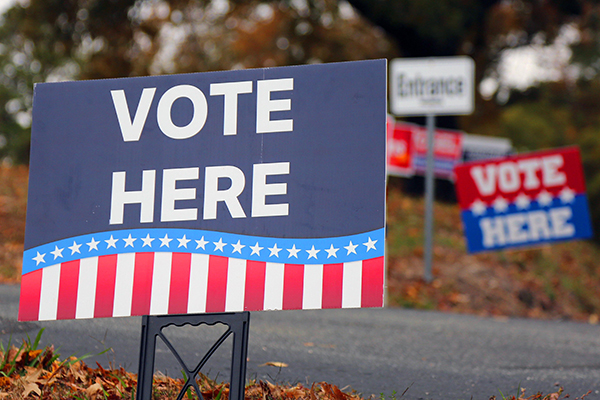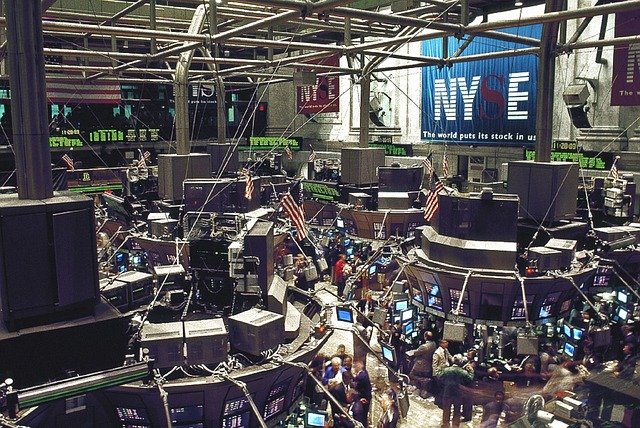Happy Halloween! Right in time for the season of spooks and specters came another October stock market selloff. October has a history of market selloffs, the most famous of which occurred in 1929 of course. October 19th was the 31st anniversary of Black Monday, the biggest one-day selloff in stock market history, in terms of percentage. And this month is the tenth anniversary of the peak of the financial meltdown in 2008. Preceding that by a month was the Lehman Brothers bankruptcy, which is widely hailed as the official start of the last financial crisis. By “official,” I mean that before that there were a lot of cracks in the system, but most people had not noticed or were of the mind that things would be alright. After the Lehman bankruptcy, people were forced to acknowledge the major problems in the financial system.
Following the Lehman Bankruptcy, the wheels quickly started coming off with the AIG bailout, and October 2008 was one of the most volatile months in stock market history. That month saw the “acquisitions” of Wachovia, Countrywide, and others. I use quotations because the acquisitions were largely forced by the government so that the system would not completely crater. From mid-September to mid-November, the Dow Jones Industrial Average fell about 35%. Stocks would fall another 10% before bottoming in March 2009, well over a 50% total decline; one of the most brutal bear markets ever in terms of speed of the decline.
As they say, the rest is history. The Fed came to the rescue (a debate for another article), the economy slowly recovered, stocks eventually rebounded, and the longest bull market in history started.
So, it has been ten years since that fateful Autumn. I don’t bring this up so we can all relive a nightmare, but instead to reminisce and see where we stand. For me, Bank of America’s acquisition of Merrill Lynch was when the full power of the financial crisis hit. Having worked at Charles Schwab for a number of years, we always looked at Merrill as an adversary. When I walked into the office that Monday morning and heard that the deal had been reached Sunday night it was like a punch to the gut….after all, this was the Thundering Herd (what the sheer mass of Merrill Lynch stockbrokers had once been called).
I certainly remember speaking with Johnston & Associates clients and strategizing how to maintain stock exposure and still be able to sleep at night. While I did not pretend to know when the crisis would end or when stocks would stop plunging, I did know that it was important to maintain that long-term discipline I discuss so frequently in other investment newsletters. This is what allowed those same clients to be well positioned to take advantage of the rebound (even if it was just to not sell and ride out the storm). It is during down periods that using a professional advisor can be the most impactful.
Today, we find ourselves with an economy growing by the most, as measured by GDP, since before the crisis. This has been boosted by the Federal Reserve not only dropping short-term rates to essentially 0%, but also increasing its balance sheet by $4 Trillion during the three Quantitative Easing (QE) periods. Of course, the Fed has been gradually raising rates for the last two years and has now entered a Quantitative Tightening period where it is allowing its balance sheet to shrink, if ever so slowly. Meanwhile, due to the ultra-cheap financing available to so many people and corporations, debt levels in the US–and across the globe–have soared. This combination has caused the yield curve to compress, meaning short-term rates are almost the same as long-term rates. The other recent boost arrived courtesy of last year’s tax cut.
As for this latest disturbance in the stock market, in no way, shape or form do we think this correction becomes another 2008, even if it does morph into something bigger than the roughly 10% drop we have had from the recent highs. The economy is far too solid, and there does not seem to be a lot of excess in the markets—other than debt, but with interest rates still low relative to history, that debt level remains largely serviceable.
However, I am concerned about this selloff leading to something a little more significant. I am not suggesting that investors sell everything and run to cash; timing is very difficult and in the end we remain long-term investors. That said, a number of tailwinds—factors aiding the bull market for stocks—have turned into headwinds over the last two years: the strong US dollar, rising oil prices, rising interest rates, increasing wages, and the impact of tariffs and the trade war all are causing companies’ costs to rise putting pressure on their bottom lines. This is added to the fact we have had such great earnings numbers for the last two years that for current quarters, a disappointment looks that much worse when compared to the same quarter a year ago.
Additionally, I think we finally have a wild card in the Fed. After over a decade of historically low interest rates and the invention of Quantitative Easing (versions 1, 2, and 3), the Fed has finally raised rates enough to seemingly impact the markets. By historical measures, they are still rather accommodative, but, for example, folks are starting to see 30yr mortgage rates above 5% in some places, and this is starting to impact the housing market as affordability is decreased. The wild card is that after all these years of accommodation, there is finally some concern that the Fed may not immediately turn around and drop rates (or at least halt the increases) just because there is a stock market swoon. Chairman Powell may continue to hike, or at least hold off on cutting, so long as inflation remains in the picture.
Or they may not. The Fed has hinted in the past that they may accept inflation over 2% for a while, given how long it was depressed. Perhaps they do blink and invoke the “Greenspan Put” and start easing again at the first whiff of a bear market or a recession. “The Greenspan Put” was the phrase coined in the late 1980s and in the 1990s that suggested then Fed Chair Alan Greenspan would cut rates to support stock market values in the face of any economic crisis, no matter how insignificant it turned out to be. A put is a protective contract that creates a floor on the sale price of an asset.
Either way, the latest October swoon can be blamed in part on the new uncertainty about the Fed’s reaction to adversity. Other concerns are political: the ongoing Brexit talks continue to point to a possible hard exit, Italy’s budget woes are concerning and, here at home midterm elections loom large. The Wall Street Journal reported that the Republican Party has all but given up hope of retaining the House. While the majority in the Senate is just 2 seats vs 23 seats in the House, the way the elections fall this year, most of the Senate seats up for contention (only 1/3 every two years) are in GOP strongholds or weaker Democratic zones. By contrast, every seat in the House is up for election and, should the Democrats win the House, Senate, or both, we will likely be in for at least two years of gridlock. In such a case, the President could be expected to veto anything that would repeal what he has done so far, with any Congressional majority unlikely to be enough to overturn the veto. However, a strong Democratic win would cause some concern of a follow-on victory two years from now, meaning if they could take control of Congress and win the White House, they would have to ability to reverse much of the Trump Agenda. Admittedly, this is a while away, and I would not suggest altering investment discipline because of that, but the market may wobble depending on the strength of the Democrats’ win.
Continuing with the Trump Agenda, the trade war situation continues to cause stocks to struggle –not only because it continues to escalate, but also because companies, especially major multinational manufacturers, are starting to report cost increases associated with tariffs. The latest escalation is that the White House has threatened to put tariffs on all Chinese goods if the summit between President Trump and President Xi Jinping (scheduled for late November) does not happen. Conversely, should the US and China reach some kind of a trade agreement, the market would instantly rally, especially the industrial sector. This uncertainty will keep stocks on their toes for the next month or so.
In the end, we see the volatility continuing. Volatility tends to move in five-year cycles. The period from 2013 through 2017 was essentially five years of low volatility. Therefore, I expect 2018 to be the beginning of the next cycle of higher volatility; admittedly, this could just be normal volatility, but it will feel more extreme – like jumping into the pool after sitting in the hot tub. Volatility does not have to be bad however as it creates more buying opportunities.
I also suspect stocks may move sideways for the intermediate term. Given the ten years of bull market advances and relative stock valuations, we may look back two or three years from now and, point-to-point, not have moved much. If this occurs in a more volatile period, there will be lots of rises and drops. We have developed a new strategy, called the Value Capture Portfolio, to take advantage of this expectation. I would enjoy the opportunity to explain it to you in more detail. We will be sending out more on this soon, but please contact me if you would like to chat before then.
Finally, we will still maintain our long-term discipline for long-term investors. While this selloff could worsen, it could also end at the drop of a hat, trade agreement, or Fed hesitation. Even if we are heading farther down, we do not expect this selloff to morph into a repeat of the truly horrible bear markets of the past. We will take a few defensive positions and reallocate where appropriate to position for the next upswing. As always, Jim and I look forward to your comments and questions.





